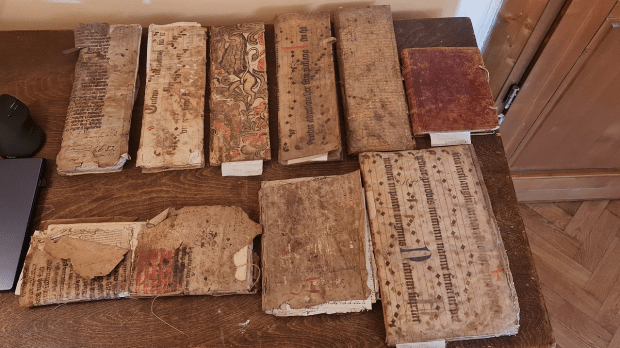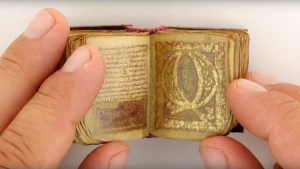The Ropemakers’ Tower of St. Margaret’s Church in Medias, a town in central Romania, is home to an Indiana-Jones-like archaeological find. A team of researchers led by Adinel C. Dincă of Babeș-Bolyai University has discovered a trove of early printed works and medieval manuscript fragments dating back to as early as the 9th century.
The article published by Medievalists.net explains the Biblioteca Batthyaneum, a branch of the National Library of Romania, announced the discovery on its Facebook page in early September, reporting “that the find included 139 printed books dating to between 1470 and 1600, two manuscripts from the early 16th century and about 60 more charters and other documents dating to between the 14th and 16th centuries.”
It also says the team found “several manuscript fragments that were kept inside parish records, the earliest of which is from the Carolingian era and may date back to as early as the 9th century.”
The discovery of these medieval manuscripts, the Biblioteca Batthyaneum said, resembles “one of Indiana Jones’ stories.”
The church dates to the early 15th century, built by Germans who settled in the area in the Late Middle Ages. The collection of medieval manuscripts, Medievalists explains, might have been left in the church for decades, probably to keep them protected during one of the Great Wars of the 20th century. However, in an email to Medievalists.net, professor Dincă explains that the collection was placed in the church with the utmost care, properly organized in categories, somewhat contradicting the idea that they might have been kept there just for protection, or stored in the tower in a rush:
When I first encountered the books, I immediately noticed the disposition of the volumes according to a certain historical typology: bibles and biblical texts, patristic, theology etc. This order doesn’t look like an improvisation and suggests that the collection was placed there at an earlier stage of development. Furthermore, older shelfmarks were following (with few exceptions) a clear order. The books were part of the church patrimony and were mostly kept (from a certain moment on) for their intrinsic value.


